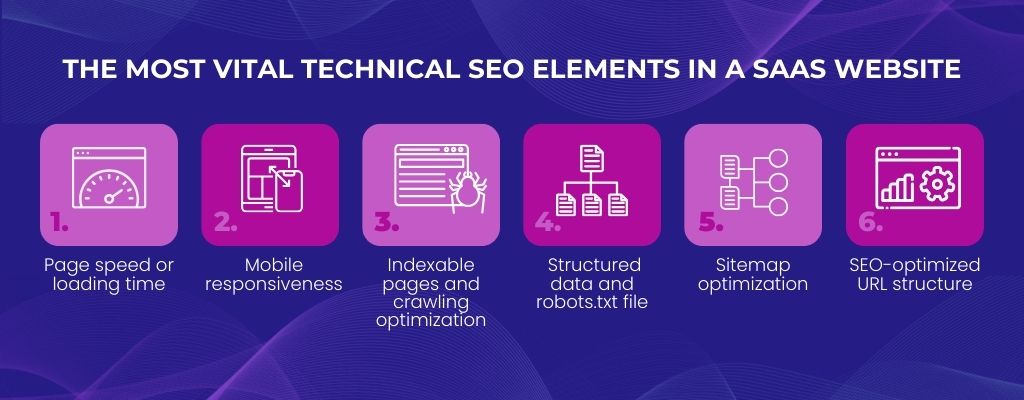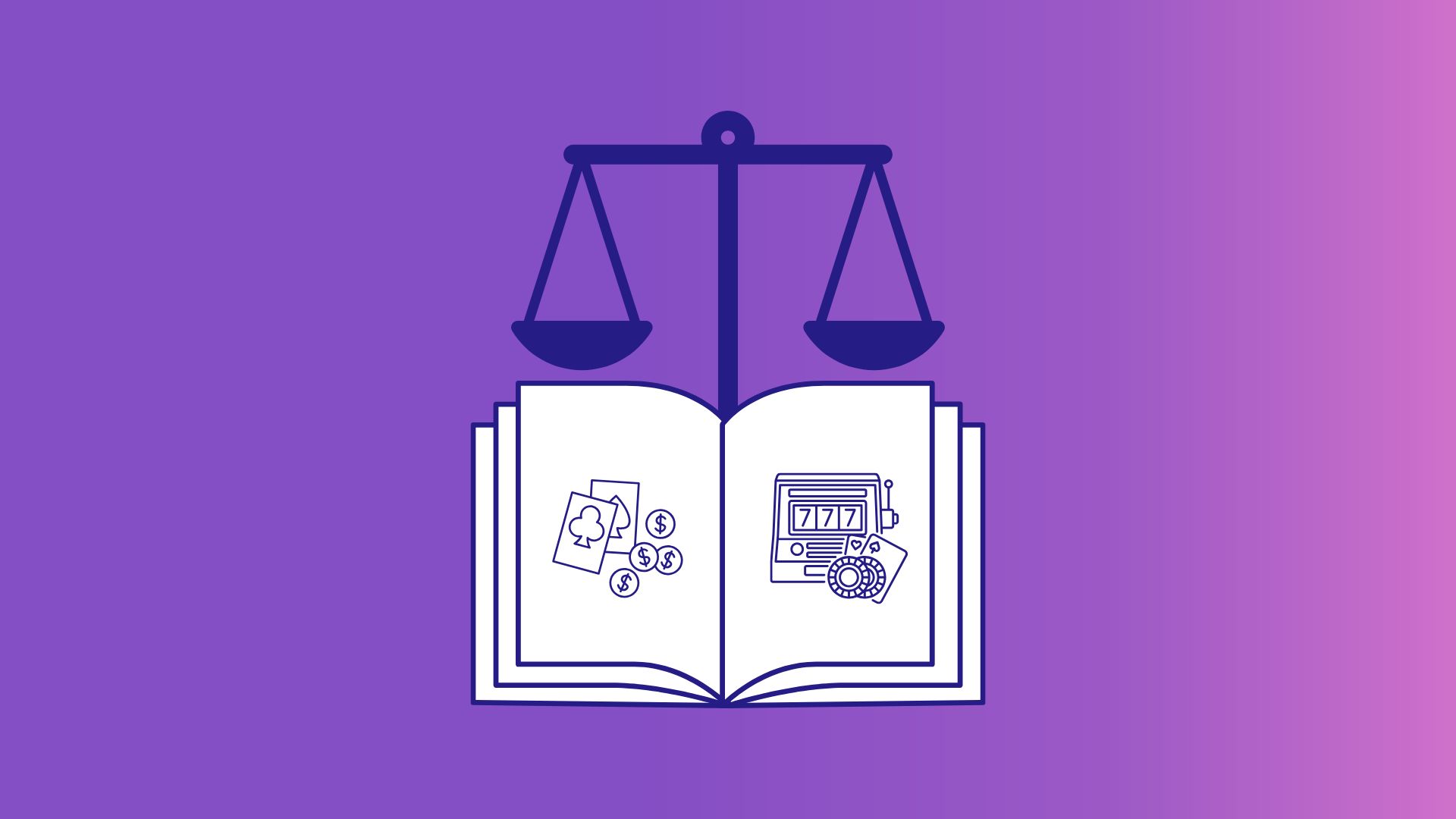12 SaaS SEO Mistakes to Avoid in 2024

Grow Organic Traffic
Why Is SEO Important for SaaS?
SEO (Search Engine Optimization) increases a website’s online visibility and authority. You can look at SEO as the blueprint or the map for a particular site to drive traffic and increase engagement rate; without this blueprint, the website would not have any direction, and the efforts of those involved would only go to waste.
This blueprint becomes particularly important for a SaaS (Software-as-a-Service) website that needs higher conversion rates to extract revenue. If your website doesn’t rank on the first page of major search engines like Google, people won’t be able to see your products and content.
Gone are the days when you could rely heavily on paid advertisements to get your website ranking high on search engine pages. Organic growth is the game’s name today, and you can only achieve this type of growth by optimizing your SEO practices.
One way to optimize your SEO strategy is through paying attention to these SaaS SEO mistakes that webmasters and marketers often make.
1. Lack of customer-centric strategy
For your website to gain much traction in search engines, you have to direct your content towards what your niche audience base needs. So, before you plan your SEO strategy, the first thing you need to do is to identify who your niche customers are.
Granted that you are in the SaaS business, it’s already a given that you have determined who these niche customers are. After all, they should be your top priority when developing your product or service. The same goes for your SEO strategy; your content and marketing direction should be customer-centric.
How would you make your SaaS SEO strategy customer-centric? Here are a few tips to get you started:
- Identify the interests and pain points of your customers. How can your content provide solutions for their current needs?
- Engage directly with your audience through surveys, polls, and one-on-one conversations. What topics are related to your product that they want to read about?
- Try to monitor the movements of your competitors. What are the things that are working for them?
2. Too much focus on driving traffic
When asked about optimizing your SEO strategy, we won’t blame you if the first thing that comes to your mind is driving traffic from multiple channels. After all, this is how your audience base will get to know your products or services. However, focusing too much on traffic could hurt the quality of your content and, eventually, your ranking on search engine results.
Targeting website traffic alone is not optimal for your SaaS SEO strategy. When this becomes your main tactic, you’ll focus on the quantity of your content rather than delivering carefully crafted pieces that could help provide solutions for your customer base’s pain points.
Moreover, major search engines like Google are now stamping down on sites aggregating content. These search engines know if you’re just imitating any content, so you should aim for uniquely written pieces.
It is okay to prioritize website traffic, but only when partnered with creative direction and a customer-centric strategy. Content is still king on the web despite all the transitions that search engines have gone through.
3. Faulty internal linking
Optimizing your internal linking strategy is one of the answers if you want to take advantage of all the content on your website. Internal links are interconnected multiple links on the same domain, a network of pages that essentially form your website structure and navigation.
Navigating your website should be easy and intuitive, especially for the benefit of your visitors and readers. Interconnected links should be relevant to each other so that your readers can easily browse through information and find what they are looking for on your website.
Faulty internal linking is one of the SaaS SEO mistakes that many people tend to overlook. Internal links are not just for the benefit of your readers; search engines like Google also use these hyperlinks to effectively crawl your page. If you have confusing and broken internal links, it might affect your ranking in search engine results pages.
Another benefit of internal linking is it distributes authority juices within your domain. If you have a high-ranking page, you want to link to that page internally to spread the authority juice to your new pages.
4. Ignoring low search volume keywords
It is perfectly understandable for webmasters or marketers just starting their SEO journey if they target high-search volume keywords. After all, these are the topics that most people are searching for, so the first instinct is to go after them and get in on the fun.
However, you should know that high search volume keywords always come with increased competition. Whether you’re a starting website or a large-scale one, competing against pages already ranked high on those keywords is tough. And you know how it is with Google: if you are not visible on the first page, it is almost impossible to get organic traffic.
So, the solution here is to also go after low-search volume keywords. They may be less searched than their counterparts, but you may be getting more value for your investment. This is particularly true in SaaS websites, where people search for niche products or services. If you rank high for these niche products, chances are you are also increasing your click-through and conversion rates.
5. Failure to post relevant content
Getting in on the digital content craze comes with every bit of advantage. You have all these platforms to share your products or services. You’re getting free marketing and promotional run-throughs on social media channels, and it doesn’t take a lot out of your resources to maintain the technicalities of your website.
But you should know that the digital content industry is also cutthroat; you need to be timely, efficient, and quick to stay relevant in your niche. As much as people relied on newspapers and magazines for news back in the day, the community now depends on online channels to stay updated on the topics they are interested in.
In line with this, failing to develop relevant content is one of the most overlooked SaaS SEO mistakes. SaaS people tend to think that their website should only focus on descriptions of their products or services. But as an online presence, you can influence any form of content, whether a relevant long-form piece or a timely social media infographic.
6. Non-optimization of local SEO
Local SEO benefits all websites but becomes even more critical for SaaS pages. As a SaaS website, there’s a good chance that you’re selling a product or service within specific geographical locations. You want to become more visible in local results on search engines, and optimizing your regional SEO strategy could help you with that.
Essentially, local SEO is a niche SEO strategy that caters to a specific audience in a region, province, city, or neighborhood. If you only offer your product or service in a single location, it’s only fitting to focus your SEO efforts on that area. You can reach more customers directly interested in your product, which could lead to a higher ROI.
When optimizing local SEO, it’s your goal to be included in Google’s “Local Pack.” You should be able to update your business profile listings, specifically your business address, contact information, and photos. Furthermore, you might want to give feedback on customer reviews, as this also appears on search results.
7. Non-optimization of technical SEO
Along with keyword research and your content pieces, it is also vital that you optimize the technical side of your SEO strategy. Even if you have the best-researched and best-written content, it will not rank on search engines if you have broken links, confusing website navigation, or page indexing issues.
You must know the most vital technical SEO elements in a SaaS website. Take a look at these components below:
- Page speed or loading time
- Mobile responsiveness
- Indexable pages and crawling optimization
- Structured data and robots.txt file
- Sitemap optimization
- SEO-optimized URL structure
Streamlining the technical SEO side of your strategy is not that difficult to do. For example, you can improve your page speed by reducing multimedia elements on a specific page or compressing images. The important thing again is to pay attention to the small details because these are crucial in technical SEO.

8. Bad link building practices
Link building is among the most extensive growth drives in ranking on significant search engines like Google. When other websites link back to your site, you’re building up your authority, which would help you rank higher on search results. However, this strategy could lead to a downward spiral, especially if you become greedy in your pursuit of link-building.
Here’s a quick rule in link-building: you need high-quality links for your webpage to rank as high as you want. Despite this rule, many webmasters still get into bad link-building practices, such as the ones we listed below:
- Buying links from websites that are not relevant to your niche
- Link exchanges with other websites
- Spamming forums and comment sections with your links
- Getting into auto-submitted links
- Buying links from websites that have lower domain authority
Link building is effective as long as you’re staying within your bounds. The key here is to create information content that other websites are willing to naturally link to.
9. Lack of helpful content
Even if you are a SaaS website that drives revenue from subscriptions to your products and services, you still can create long-form content. The lack of helpful content is one of the SaaS SEO mistakes that people make, as they tend to be more focused on optimizing their homepage and product landing pages.
To maximize your platform, crafting well-written, helpful content could get you ranking on the first page of Google. The idea here is to provide content that could solve your niche audience’s pain points. These content pieces should be centered on in-depth keyword research, market study, and competition observation.
Your helpful content could come in various forms, including case studies, white papers, and testimonials. As a SaaS company, you offer niche solutions through your products. Your content could then focus on these solutions, as these are most likely composed of keywords your current and potential customers are searching for.
Bear in mind that you can do so much with your website. It does not just serve as an exhibition of your products; instead, it acts as a one-stop solution provider for your niche customer base.
10. Undervaluing the impact of social media
Along with increasing your website’s visibility on search engines such as Google, you should also pay attention to what social media can give to you. Depending on the demographics of your niche customer base, most of them might be present on different social media platforms. So, your SaaS product could also benefit from having an established presence in social media.
Of course, social media does not directly impact how your website will rank in search engines. However, there are all sorts of information that you can get from social media while also boosting brand awareness and visibility.
For example, you can get much-needed data about your audience on social media. What are the topics that your niche audience mainly engages in? Are there products and services that they are essentially talking about? By diving deep into the information you can get from social media, you’ll know your audience better and develop your product in a customer-focused direction.
Thankfully, most social media platforms have built-in analytics tools you can use. You gain access to data-driven insights, which would help you optimize your product development and SaaS SEO strategy.
11. Failure to follow up on recent algorithm updates
Major search engines such as Google have gone through countless algorithm updates. Recently, Google launched a major algorithm update focusing on helpful and unique content rather than those pages that use aggregated content from other relevant websites.
In line with this, it is only fitting that you follow news and announcements on algorithm updates. Some online news outlets focus on SEO news and search engine updates, so you might want to visit their sites from time to time.
12. Pausing market research
As we always say, SEO is never a one-off process. It is ever-changing and revolves around varying customer interests and market trends. There’s also the fact that technology will not stop advancing, which would affect not just your product but also your marketing strategies.
There is just no sense in pausing market research. To stay relevant in your niche industry, you should continuously analyze your customers and competitors. Your niche audience’s pain points and interests vary from time to time, so your SaaS SEO strategy that was effective a year ago may not be as good as today.
Conclusion
Getting your SaaS website visible on search engines and other digital channels is not overnight work; it could take months or even a year to see solid results at the forefront. Before you dive deep into planning your SaaS SEO strategy, you should know that you’re entering a painstaking process that will require significant energy and resources.
We’re saying this not to discourage you but to help you avoid making some of the biggest SaaS SEO mistakes. When overthinking about growing your website fast, you tend to leave out the small details despite their importance in this process. You may be doing your part in researching customer-centric keywords, and your content might be top-notch, but these do not matter if you have broken links and non-existent header tags and meta descriptions.
That said, it’s essential to get your bases covered before pursuing lofty SEO goals. View it as a ladder-type process where you must take the little steps to get to the topmost platform. The journey could be rigorous, but the rewards are many if you get your SaaS SEO strategy right.
If you’re feeling uncertain about tackling the task on your own, don’t hesitate to reach out to us. We’re here to help and will work with you to ensure your success.
Grow Organic Traffic
Read our other articles

How to Comply with Gambling Marketing Laws: A Strategic Guide for Businesses


Is Gambling Legal in Georgia? Understanding State Laws and Regulations


Understanding iGaming Licenses in 2024: What You Need to Know






